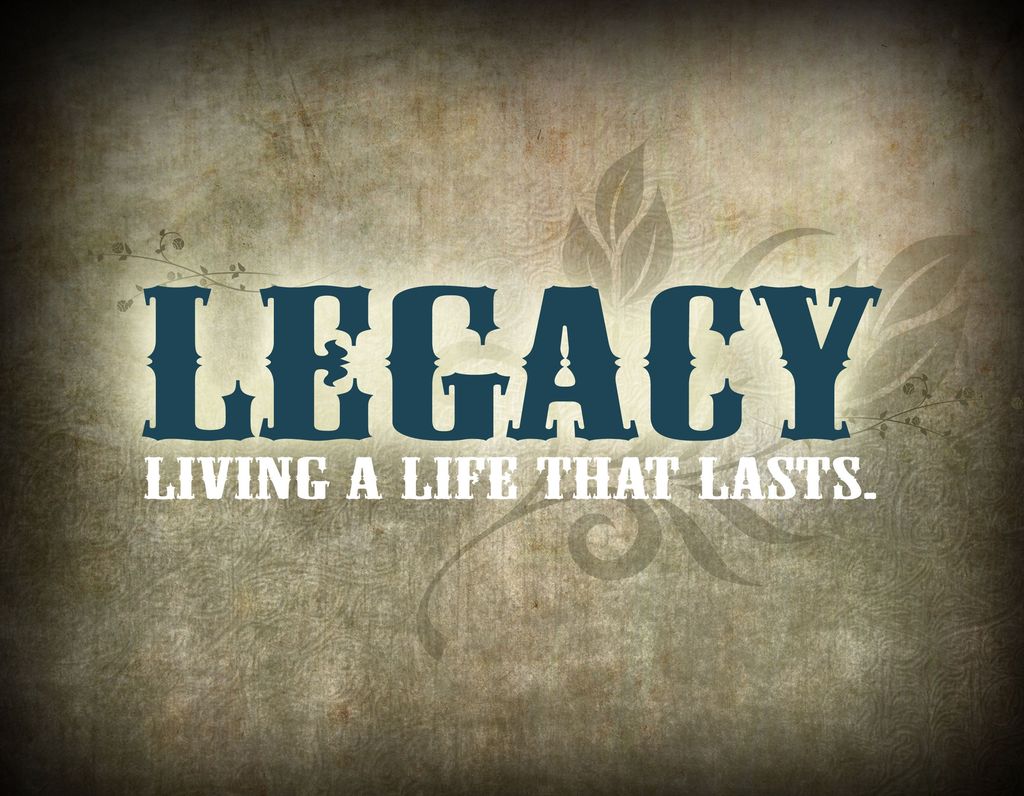
The windswept shores of Scotland have long guarded secrets, whispering tales of ancient civilizations and forgotten kingdoms. For centuries, the enigmatic Picts, a formidable people who fiercely defended their lands and left behind intricate artistry, have captivated historians and archaeologists alike. Their mysterious disappearance by the end of the first millennium only deepens the allure, leaving us yearning for any tangible connection to their vibrant past.
Imagine, then, the sheer exhilaration when a glint of metal, barely perceptible amidst the earth, suddenly revealed a direct link to this fabled era. This isn’t a story of a seasoned professional, armed with decades of specialized training and advanced equipment, but rather a testament to the power of pure passion and an open mind. It’s a narrative that beautifully illustrates how profound discoveries can spring from the most unexpected sources.
This article embarks on a journey to a historic excavation site in Scotland, where a retired engineer, driven by an innate curiosity and a desire to contribute, unearthed a relic that promises to rewrite chapters of Pictish history. We will not only marvel at this singular artifact but also delve into the deeper meaning of “amateur”—a term often misunderstood, yet one that encapsulates the very spirit of discovery and dedication that brought this ancient treasure back into the light.

1. **The Unlikely Discovery: John Ralph’s Moment of a Millennium**The tale begins not with a pickaxe wielded by a grizzled veteran of countless digs, but with John Ralph, a 68-year-old former engineer. Recently retired and seeking to infuse his newfound leisure with purpose, Ralph stumbled upon an online call for volunteers to assist with the Burghead excavations. This wasn’t a professional endeavor for him; it was an opportunity to engage with history, to immerse himself in a pursuit far removed from the blueprints and calculations of his previous career. With his sister residing in Burghead, the connection felt serendipitous, drawing him into an adventure that would soon prove to be far more significant than he could have ever imagined.
Ralph, in his own words, described his initial forays into archaeology as a learning curve, filled with eager but ultimately misguided enthusiasm. He candidly recounted his “knack of getting excited for shiny pebbles,” a charming admission that highlights the novice’s journey. Yet, even amidst these early misidentifications, he was gaining invaluable experience, uncovering “a few interesting items including bone pins.” The true draw, he emphasized, was “being part of the team,” underscoring the communal spirit and shared intellectual pursuit that often defines such volunteer efforts.
Then, the moment arrived. As Ralph meticulously cleaned the floor of a structure, a seemingly routine task, his eyes caught something extraordinary. First, a metal pin emerged, hinting at an imminent find. And then, undeniably, “lo and behold, there was the ring.” This wasn’t just another shiny pebble; it was a distinctive metallic object, one that immediately registered as something truly ancient and profoundly important. It was a discovery that transcended his initial expectations, transforming a casual volunteer effort into a pivotal moment in Scottish archaeology.

2. **A Glimmer from the Past: The 1,000-Year-Old Pictish Ring**The artifact John Ralph uncovered was no ordinary piece of jewelry; it was a “remarkable” ring, its very existence defying the passage of a millennium. Dating back at least a thousand years, this exquisite piece immediately captivated Professor Gordon Noble of the University of Aberdeen, who leads the excavation work. Professor Noble’s reaction — “we could see it was something really exciting as despite more than 1,000 years in the ground we could see glints” — speaks volumes about the ring’s exceptional preservation and intrinsic historical value. This wasn’t merely an old object; it was a vibrant echo from an ancient past, remarkably intact and ready to tell its story.
What makes this particular find so extraordinary is its rarity. The context explicitly states that this ring is “one of the few Pictish rings ever discovered.” The scarcity of such artifacts means that each new find provides an invaluable window into a civilization whose material culture remains largely elusive. This single ring, therefore, doesn’t just represent an individual piece of adornment; it serves as a crucial data point, enriching our understanding of Pictish craftsmanship, societal status, and possibly even their belief systems. Its discovery offers researchers a rare opportunity to piece together more fragments of their complex world.
The ring’s significance extends beyond its age and rarity. It directly offers “insights into the Pictish kingdom’s history.” Every line, every embellishment, every material choice on this ancient piece of jewelry can potentially unlock secrets about Pictish identity, trade networks, and artistic expression. Its very presence on the site of Burghead, an area considered “a significant seat of power” during the Pictish era, suggests it belonged to someone of considerable status, further enhancing its narrative potential and making it a truly incredible addition to the archaeological record.

3. **Burghead: A Seat of Ancient Power Unveiled**The discovery of the Pictish ring is intrinsically linked to its geographical origin: the Burghead excavations in Scotland. This site, according to the information, is thought to have been a pivotal settlement, serving as nothing less than “a significant seat of power” during the flourishing Pictish kingdom. Encompassing a broad historical sweep from 500 to 1000 CE, Burghead represents a crucial nexus for understanding the political, social, and economic structures of the Picts during their ascendancy and eventual decline. The continuous work at such sites is paramount for shedding light on these periods of ancient history.
Excavations like the one at Burghead are painstaking processes, often yielding fragments rather than complete narratives. Yet, each shard of pottery, each bone pin, and certainly each precious metal artifact contributes to a mosaic that gradually reveals the complexities of past societies. The fact that a ring of this caliber was found here reinforces the notion of Burghead’s importance, suggesting it was a place where wealth, authority, and refined artistry converged. Such findings not only confirm existing hypotheses but also often generate new questions, propelling further inquiry into the Pictish way of life.
The relentless efforts of teams like the one led by Professor Gordon Noble, spanning “the last three years” of excavation work at Burghead, are critical. These sustained endeavors are what allow for such remarkable finds to surface, slowly pulling back the veil on a period of Scottish history that, despite its significance, remains shrouded in mystery. The ring, unearthed in this specific geographical and historical context, becomes more than an object; it transforms into a silent narrator, enabling us to better understand the powerful group who “defended Scotland from invaders and mysteriously vanished by the end of the first millennium.”

4. **The Heart of an “Amateur”: A Passionate Pursuit**John Ralph’s incredible discovery immediately brings into focus the very essence of the word “amateur.” Far from being a derogatory term, its earliest and most profound sense is “one that has a marked fondness, liking, or taste.” The word itself, stemming from the Latin “amator” meaning “lover,” eloquently describes someone who pursues an activity “for love rather than for money.” This definition perfectly encapsulates John Ralph’s journey: a retired engineer dedicating his free time to archaeological digs not for remuneration, but for the sheer love of historical exploration and the camaraderie of the team. His enthusiasm, even for “shiny pebbles,” speaks volumes about this intrinsic motivation.
The dichotomy between “amateur” and “professional” often revolves around the question of payment. While the context acknowledges that some amateurs may receive payment, it firmly establishes that the core distinction lies in motivation: an amateur “does not do it for the money; they do it out of passion.” This fundamental principle is crucial. When a pursuit is driven by an unadulterated love for the craft, as in the case of John Ralph’s archaeological volunteering, it often unlocks levels of dedication and curiosity that might otherwise be overlooked. It’s about the joy of the quest, the thrill of discovery, rather than the bottom line.
This genuine passion allows amateurs to engage deeply with their chosen fields, fostering a sense of fulfillment and contribution. Whether it’s the amateur photographer who “fell in love with the art form” before considering sales, or John Ralph meticulously cleaning an excavation floor, the driving force is an internal one. It’s this “love for the craft” that empowers individuals to delve into complex subjects, invest countless hours, and ultimately, make discoveries of immense historical and scientific value, reminding us that expertise isn’t solely confined to those on a payroll.
Read more about: From Blockbusters to Auction Blocks: The Most Valuable Cars to Ever Grace Our Screens

5. **Beyond Formal Training: The Open Mind of the Amateur**While the term “amateur” can sometimes imply a “lack of skill or polish,” the narrative of John Ralph’s find profoundly showcases its positive attributes, particularly the advantage of an “open mind.” Lacking the formal training and potential biases that can sometimes accompany professional specialization, an amateur often approaches a subject with fresh eyes and unburdened curiosity. This perspective can lead to unconventional insights and, in some cases, truly groundbreaking discoveries. Ralph’s initial excitement over “shiny pebbles” might have been misdirected, but it underscores a fundamental eagerness to explore and identify, a characteristic vital for any successful explorer.
The context highlights this dual nature of amateurism, noting that while “some amateur work may be considered sub-par” due to a lack of formal training, an amateur is also “in a position to approach a subject with an open mind… and in a financially disinterested manner.” This financial disinterest means there’s less pressure for a specific outcome or adherence to established paradigms, allowing for a more organic and exploratory process. It’s a freedom that can foster ingenuity and persistence, crucial elements when facing the often-arduous tasks of archaeological excavation.
John Ralph exemplifies this open-minded approach. His participation was purely voluntary, driven by interest rather than professional obligation. This allowed him the mental space to simply “make use of his free time” and engage with the dig on its own terms. His persistence, even after initial disappointments, led him to that incredible moment when he spotted the metal pin and then the ring. It serves as a powerful reminder that an amateur’s journey is not always about immediate mastery, but often about the journey of learning, observing, and allowing serendipity to play its part, guided by genuine interest rather than a rigid professional agenda.

6. **The Shifting Sands of “Amateur”: A Tale of Two Meanings**The profound impact of John Ralph’s discovery beautifully illuminates the initial and most cherished meaning of “amateur”: one who pursues a passion “for love rather than for money.” This echoes its ancient Latin root, “amator,” meaning “lover.” It’s a powerful reminder that genuine interest and dedication often spark the most extraordinary breakthroughs, regardless of formal titles or financial incentives.
However, the word “amateur” has traversed a complex linguistic journey, acquiring a second, distinctly different connotation. By 1790, it was already being deployed in a “somewhat condescending extended sense,” as noted in George Rous’s description of Edmund Burke as “a bystander, a mere amateur of aristocracy.” This usage hints at a “lack of skill or polish,” implying that work done without professional training might be considered “sub-par.”
Indeed, “amateur” can refer to one who does something for the love of it, and also to one who is not terribly competent at something. This dual nature means that depending on the context, the word can be either a badge of passionate honor or a subtle critique of inexperience. It’s a linguistic tightrope walk, where understanding the speaker’s intent becomes paramount.
Yet, it is the spirit of the “lover” that truly resonates with tales of discovery like Ralph’s. His “knack of getting excited for shiny pebbles” before the monumental find wasn’t a sign of incompetence but of an unbridled enthusiasm to engage with history. This inherent curiosity, untainted by professional pressures, underscores the invaluable contribution that the “amateur” in its purest form continues to make to our collective knowledge.

7. **The Olympic Arena: Amateurism’s Fiercest Battleground**Few arenas have epitomized the struggle to define “amateur” quite like the Olympic Games. For much of the 20th century, the Olympics stood as a global bastion of amateurism, strictly enforcing a code that banned any athlete who had received payment for their sport. A stark example of this rigid stance was Jim Thorpe, famously stripped of his track and field medals in 1912 for accepting expense money for playing baseball.
This strict amateur code, however, faced formidable challenges, particularly from the nations of the Communist Bloc. These countries fielded teams of Olympians who were “all nominally students, soldiers, or working in a profession,” yet “many of whom were in reality paid by the state to train on a full-time basis.” This created a dramatic imbalance, pushing the boundaries of what truly constituted an “amateur” athlete in the international spotlight.
The tension escalated near the end of the 1960s when the Canadian Amateur Hockey Association (CAHA) felt its amateur players could no longer compete against the Soviet Union’s full-time athletes and other improving European teams. The CAHA championed the inclusion of professional league players, a bold move that met strong opposition from both the International Ice Hockey Federation (IIHF) and the International Olympic Committee (IOC).
Initially, the IIHF agreed to permit Canada to use nine non-NHL professional hockey players for the 1970 World Championships. However, this decision was swiftly reversed in January 1970 after IOC President Avery Brundage declared that ice hockey’s Olympic status would be jeopardized by such a change. In a powerful statement, Canada withdrew from all international ice hockey competitions, vowing not to return until “open competition” was instituted, highlighting the depth of the dispute over amateur definitions.
The path to resolution was long, finally taking shape in 1975 when Günther Sabetzki became president of the IIHF. He helped mediate the disagreement with the CAHA, leading to the IIHF agreeing to “open competition” for all players in the World Championships by 1976. Despite this breakthrough, NHL players remained barred from the Olympics due to the NHL’s unwillingness to pause its season and the IOC’s lingering amateur-only policy, demonstrating the complex layers of negotiation involved.
Further disputes erupted before the 1984 Winter Olympics concerning the definition of a professional player, especially regarding those who had signed NHL contracts but played fewer than ten games. The United States Olympic Committee (USOC) controversially maintained that any NHL-contracted player was a professional, regardless of games played. An emergency IOC meeting eventually ruled NHL-contracted players were eligible *only if* they had not played in any NHL games, rendering several athletes ineligible and prompting Canadian officials to threaten withdrawal.
Ultimately, a significant shift occurred in 1986 when the IOC voted to allow all athletes to compete in the Olympic Games starting in 1988, ceding the decision to individual sport federations regarding professional participation. Following President Brundage’s retirement in 1972, the amateurism rules had been “steadily relaxed, amounting only to technicalities and lip service,” until their “complete abandonment in the 1990s.” Today, only wrestling and boxing retain amateur fight rules for their Olympic tournaments, a testament to the dramatic evolution of the “amateur” concept in elite sports.

8. **Amateurs Igniting Innovation: Contributions Across Modern Fields**While the world of elite sports grappled with the definition of amateurism, individuals driven by pure passion continued to make monumental contributions across an astonishing array of fields. The digital age, in particular, has seen a flourishing of amateur talent, nowhere more evident than in the “open source movement” in computer programming. Countless valuable contributions, shaping the very software we use daily, have come from these dedicated, unpaid enthusiasts.
Beyond the digital realm, the spirit of the amateur has enriched numerous disciplines. Amateur dramatics, often reaching “high standards” despite lacking professional budgets, brings theater to communities and nurtures creative talent. Fields like astronomy, chemistry, history, linguistics, and the natural sciences have consistently “benefited from the activities of amateurs,” demonstrating that curiosity and dedication are as potent as formal institutional backing.
History is replete with examples of these self-driven pioneers. Gregor Mendel, the “father of modern genetics,” was an amateur scientist who “never held a position in his field of study,” yet his meticulous experiments with pea plants laid the foundation for our understanding of heredity. Radio astronomy, a crucial branch of modern astrophysics, was “founded by Grote Reber, an amateur radio operator,” whose homemade equipment peered into the cosmos.
Even the very invention of radio was significantly advanced by Guglielmo Marconi, a “young Italian man who started out by tinkering with a coherer and a spark coil as an amateur electrician.” Furthermore, Pierre de Fermat, one of history’s “highly influential mathematician[s],” pursued his groundbreaking work in number theory and probability while his primary vocation was law. These individuals are powerful reminders that intellectual breakthroughs often spring from a personal, passionate engagement with a subject, irrespective of a professional title.
Their stories underscore a timeless truth: an innate desire to understand, to experiment, and to explore can be a more potent catalyst for discovery than any professional mandate. The sheer volume and quality of contributions from these non-professionals highlight the immense value of an “open mind” and a “financially disinterested manner,” qualities that continue to drive significant advancements across the spectrum of human knowledge and endeavor.

9. **The Blurring Lines: The Rise of “Amateur Professionalism”**In the dynamic landscape of the 21st century, the clear-cut distinction between “amateur” and “professional” has become increasingly blurred, particularly in fields transformed by technology and global connectivity. The traditional definitions, often rooted in payment versus passion, now struggle to fully capture the nuances of modern engagement. This evolution has given rise to an intriguing and highly productive phenomenon: “amateur professionalism,” often abbreviated as “pro-am.”
“Amateur professionalism,” or “pro-am,” describes activities where individuals pursue their passions with a level of skill, dedication, and often, output quality that rivals or even surpasses that of traditional professionals, yet without the primary motive of financial gain. This concept has found fertile ground in areas such as “computer programming, music and astronomy,” where open access to tools, information, and global communities allows self-taught enthusiasts to achieve remarkable feats.
What defines the “pro-am” approach is a blend of the amateur’s genuine “love for the craft” and the professional’s commitment to excellence and rigor. These individuals, whether composing intricate music, developing complex software, or making significant astronomical observations, often invest immense time and effort into honing their skills and pushing boundaries. They are driven by internal standards of quality and a desire to contribute meaningfully to their chosen field, rather than by a paycheck or career ladder.
This shift signifies a profound change in how expertise is acquired and valued. The “pro-am” ethos celebrates the idea that deep engagement, continuous learning, and a relentless pursuit of mastery can emerge from avocations, transforming hobbies into highly sophisticated endeavors. It underscores the power of intrinsic motivation in fostering innovation and expanding the boundaries of what is possible, challenging the notion that only formally recognized professionals can lead the way.

10. **The Enduring Legacy of “Amator”: Tracing the Word’s Rich Tapestry**To truly appreciate the multifaceted nature of the word “amateur” in our modern lexicon, we must journey back to its very origins, tracing the rich etymological tapestry woven over centuries. At its heart lies the Latin “amator,” a beautiful word meaning “lover.” This foundational sense, “one that has a marked fondness, liking, or taste,” imbued the term with a positive, almost romantic, connotation, signifying a pursuit born of pure affection rather than obligation.
The word “amateur” came into English from the French, retaining this core essence. Its “earliest record” of this literal sense dates back to a 1777 source, emphasizing participation “for love rather than for money.” This initial understanding celebrated the dedicated enthusiast, the individual whose intellectual curiosity and passion drove their engagement with the world around them, much like John Ralph’s archaeological adventure.
However, as is often the case with language, the word’s meaning began to diverge. By 1790, a “somewhat condescending extended sense” had already emerged, as seen in George Rous’s remark. This new interpretation positioned “amateur” as indicative of someone “lacking in experience and competence,” suggesting a less-than-professional skill level. This dramatic shift highlights how societal perceptions and usage can profoundly reshape the connotations of a word over a relatively short period.
The “Did you know?” section confirms this intriguing duality, stating that “amateur may mean two strikingly different things, referring to one who does something for the love of it and also to one who is not terribly competent at something.” This inherent ambiguity means that the word’s impact depends heavily on context and inflection, carrying both the potential for admiration and for critique. It’s a testament to the dynamic nature of language itself.
Despite these evolving interpretations, the fundamental allure of the “amateur” spirit remains. It represents a powerful, accessible pathway to discovery and contribution, reminding us that an “open mind” and an intrinsic “love for the craft” are vital forces. The word “amateur” functions versatilely as both a noun and an adjective, moderately frequent in English, continually reflecting the human drive to explore, learn, and create—whether for pure joy, for groundbreaking insight, or for the sheer love of it all.
From the windswept Scottish shores where John Ralph’s gloved hand brushed away a millennium of dust, to the hallowed halls of the Olympics and the bustling digital frontiers of open-source innovation, the story of the “amateur” is a vibrant testament to the human spirit. It is a narrative that champions passion over paychecks, curiosity over credentials, and the unyielding drive to explore, discover, and contribute. Ralph’s ancient Pictish ring is more than just a relic; it’s a shining emblem of what can be achieved when pure love for a pursuit leads the way, inspiring us all to embrace our inner “amator” and perhaps, unearth a piece of history—or shape the future—ourselves.



